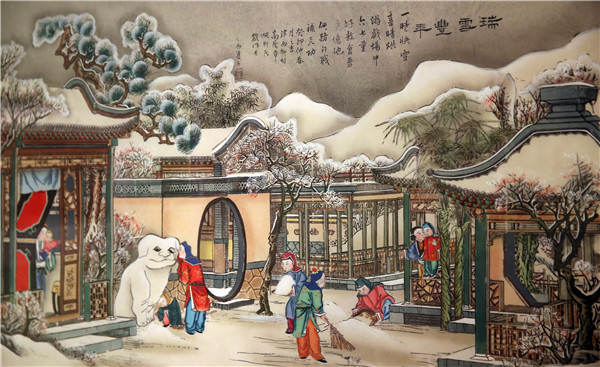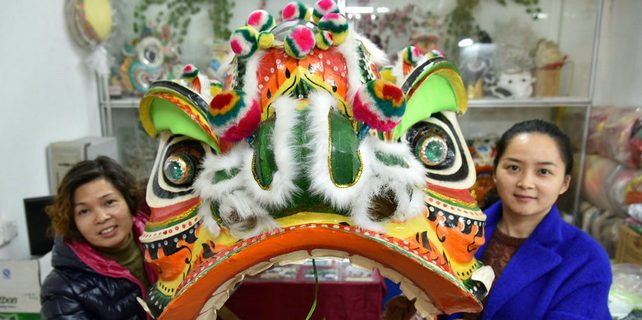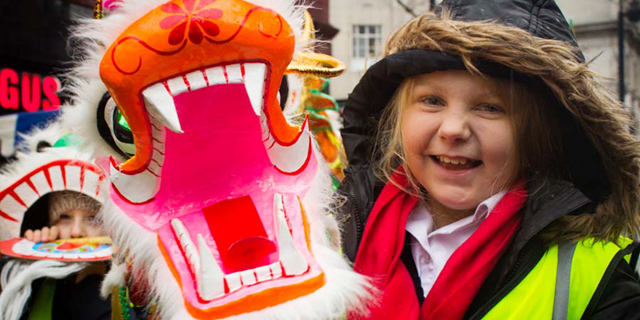Lunar New Year art shines
An exhibition about nianhua art at the National Art Museum of China traces the history of the traditional New Year paintings. Lin Qi reports.
When it comes nianhua, the traditional New Year paintings that the Chinese hang on walls and doors to seek blessings, many tend to portray a chubby child holding a big fish.
This is done to express the wish for the family line to thrive and prosper.
But one finds other objects paired with children in the nianhua if one visits Spring Breeze from Yangliuqing, an exhibition about nianhua art at the National Art Museum of China.
The Beijing museum is showing some 140 paintings.
They were produced in the town of Yangliuqing, a nianhua production center in Tianjin, during the Qing Dynasty (1644-1911) and early Republic of China period (1911-49).
The paintings were mostly donated by Wang Shucun (1923-2009), a folk art historian and Yangliuqing native.
Many are the only prints of their kind in existence, making the exhibition a rare chance for viewers to understand the aesthetics of their ancestors, according to Wu Weishan, the director of the National Art Museum of China.
The works portray little children posing with a variety of objects: A baby boy sits between lotus flowers and lotus seed pods that suggest fertility; two children raise a lotus lamp and hold two lion cubs implying hope for career success; and four children hold vases of flowers that bloom in different seasons conveying a wish for a peaceful year.
Bo Songnian, a retired professor of art history at Beijing's Central Academy of Fine Arts, says such paintings were well received because the Chinese value the carrying on of the family line and reflect their ambitions for their offspring.

















